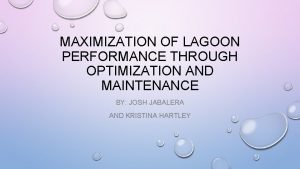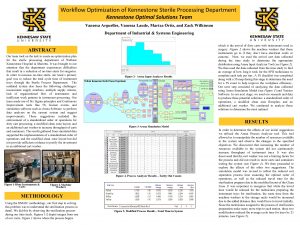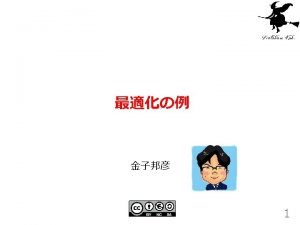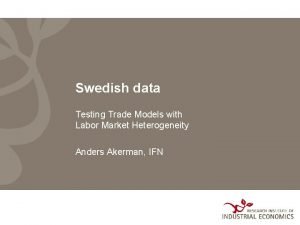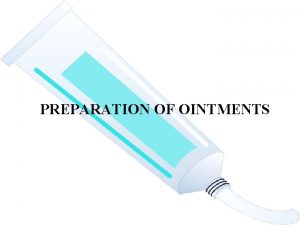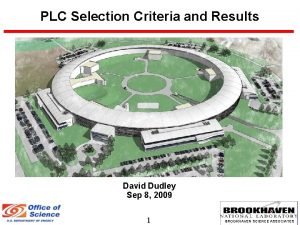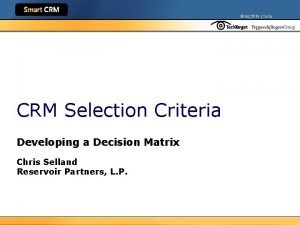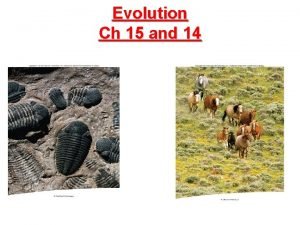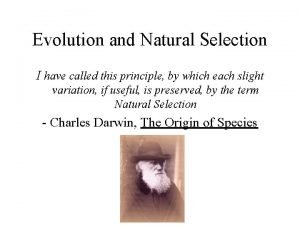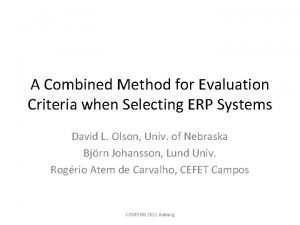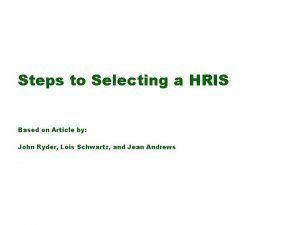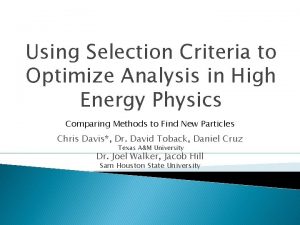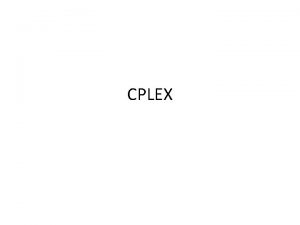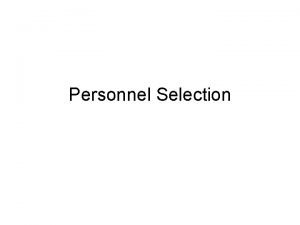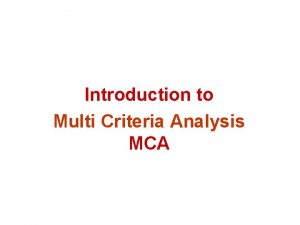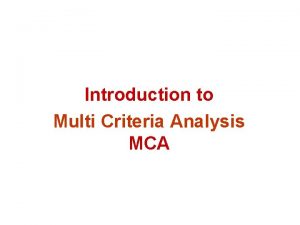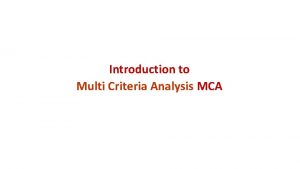Using Selection Criteria to Optimize Analysis in High





















- Slides: 21

Using Selection Criteria to Optimize Analysis in High Energy Physics Comparing Methods to Find New Particles Chris Davis*, Dr. David Toback, Daniel Cruz Texas A&M University Dr. Joel Walker, Jacob Hill Sam Houston State University

Outline � Overview ◦ Motivation for using selection criteria to find new particles � Using Selection Criteria (Cuts) � Comparing � Results 2 Different Approaches

Motivation � We want to be more sensitive to new particles in High Energy Physics � Huge amount of collisions at colliders such as LHC means lots of data to look through � Many ways to look for new particles ◦ However, most are dominated by Standard Model particle “backgrounds” � In some places, new particle “signal” dominates the background � Using selection criteria allows us to be the most sensitive to new particles in these regions 3

The Data We Used � Data is from a diphoton search for supersymmetry at Fermilab 1 A typical, simple search involves counting 1. Number of Background events expected 2. Number of Signal events expected 3. How many events are observed in the experiment � � Add up observed events to determine which hypothesis is more consistent with data 4 Hypothesis 1 Hypothesis 2 1. Eunsin Lee, TAMU Ph. D. Thesis (2010), PRL 104

Using Selection Criteria (Cuts) 5

Selection Criteria �Selection criteria are used to optimize searches ◦ Select only events that pass certain criteria ◦ New particles easily Thrown pass them out ◦ Few Background events also pass 6

Single Selection Criterion � Creates a single set of data starting at A ◦ Throw out all events that do not pass our criterion, count events from A→∞ �Lowering the value of A adds in more background, more signal �Raising value of A takes out background, but also signal ◦ We look at data that is most sensitive to signal 7 A Thrown out

Single Criterion in Experiment � Cross section, σ, is a measure of sensitivity ◦ Lower σ, better sensitivity ◦ Higher σ, worse sensitivity � Vary A to optimize sensitivity � Can we get better sensitivity by doing a more sophisticated analysis? 8 Lots of background here so poor sensitivity Not much signal here so poor sensitivity Best balance between signal and background, Best sensitivity

Two Selection Criteria �Data is placed into two sets ◦ Count events from A→B and B→∞ �This is a more sophisticated analysis 9 ◦ Does being more sophisticated translate to being more sensitive? ◦ Systematic errors can be introduced, we’ll deal with the simplest case without them in this talk A Thrown out B

Main Question �Is it better to do one or two separate sets of independent criteria? ◦ If we use two selection criteria, can we become more sensitive to new particles? . . . Yes, will show! ◦ Is using two selection criteria always more sensitive than using a single selection criterion? . . . Surprisingly no, will show! OR 10

Two Selection Criteria in Experiment � Optimal criteria give lower σ than the optimal single criterion Minimum ◦ ≈5% less in this particular experiment �More sensitive! ◦ Varying A and B to optimize sensitivity 11 A≥B

Can it be Worse? � Look at two criteria in one dimension to compare with an optimal single criterion ◦ Arbitrarily fix B and vary A ◦ There is a region where two criteria are better ◦ However, also regions where two criteria are worse! 12 A Varied B Fixed Worse! Better!

Conclusions �Our sensitivity to new particles is improved when we use selection criteria �We have determined that ◦ Two criteria CAN be better than a single, optimized criterion �Need to look for a minimum! ◦ Two criteria CAN ALSO give a worse result if used incorrectly 13

BACKUP SLIDES

Signal Events 15

Limit Calculator � Example One-Cut input � Example Two-Cut Input ◦ ◦ ◦ ◦ ◦ 16 160 1 -1 2. 59. 0790. 1218 4. 251. 3188 0 360 2 -1 2. 59. 0399. 1218 4. 218. 3188 -1 2. 59. 0391. 1218. 0326. 3188 0

Expected Cross Sections � Nevents � Find = Luminosity * σproduction * Acceptance 95% confidence limits on σproduction ◦ Taking cuts allows us to optimize expected σ ◦ � Used improved Limit Calculating program 1 1. Developed by Dr. Joel Walker, Sam Houston State University 17

Splitting Single Cut into Two � If you take a single cut and place a B cut in it, you will always improve your sensitivity ◦ Possibly not much better, but never worse 18

Binned Value Two-Cut � The 19 optimal cuts give 20. 1 fb at A: 240 B: 360

Percentage Decrease � Two cuts can be used to improve the optimal expected limit ◦ Able to achieve slightly under 10% decrease (8. 64%) 20

Acceptance � � Related 21 to signal by a scaling factor
 Winter lagoon optimization
Winter lagoon optimization Optimize reward program
Optimize reward program It service management
It service management Optimize sterile supply workflow
Optimize sterile supply workflow Sql sucks
Sql sucks Ola hallengren index optimize does not work
Ola hallengren index optimize does not work Python optimize imports
Python optimize imports Salesoptimize reviews
Salesoptimize reviews Optimize plant availability
Optimize plant availability Katariina nilsson hakkala
Katariina nilsson hakkala Preparation of ointment
Preparation of ointment Selection criteria for plc
Selection criteria for plc Crm software selection criteria
Crm software selection criteria General surgery selection criteria
General surgery selection criteria Is this true
Is this true Natural selection conditions
Natural selection conditions Criteria for natural selection
Criteria for natural selection Erp selection criteria matrix
Erp selection criteria matrix Selection criteria for international assignments
Selection criteria for international assignments Hris demonstration
Hris demonstration Bread and butter projects in project management
Bread and butter projects in project management Gradconnect nursing
Gradconnect nursing
